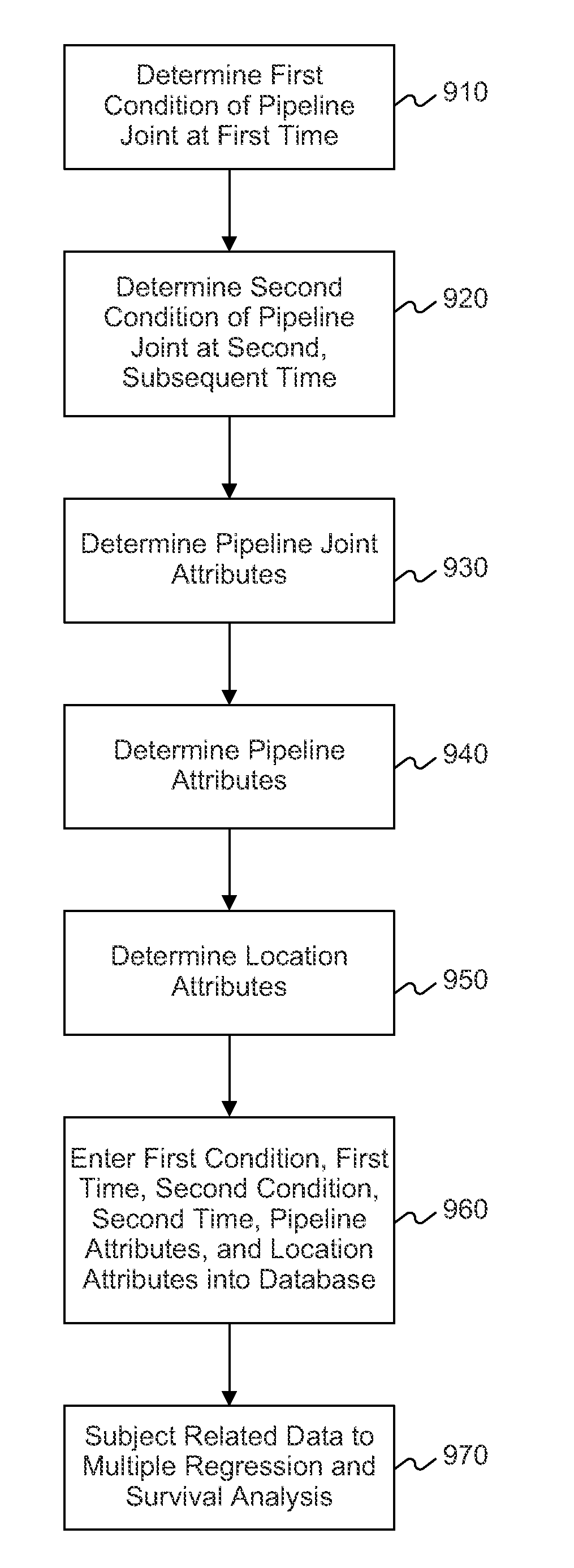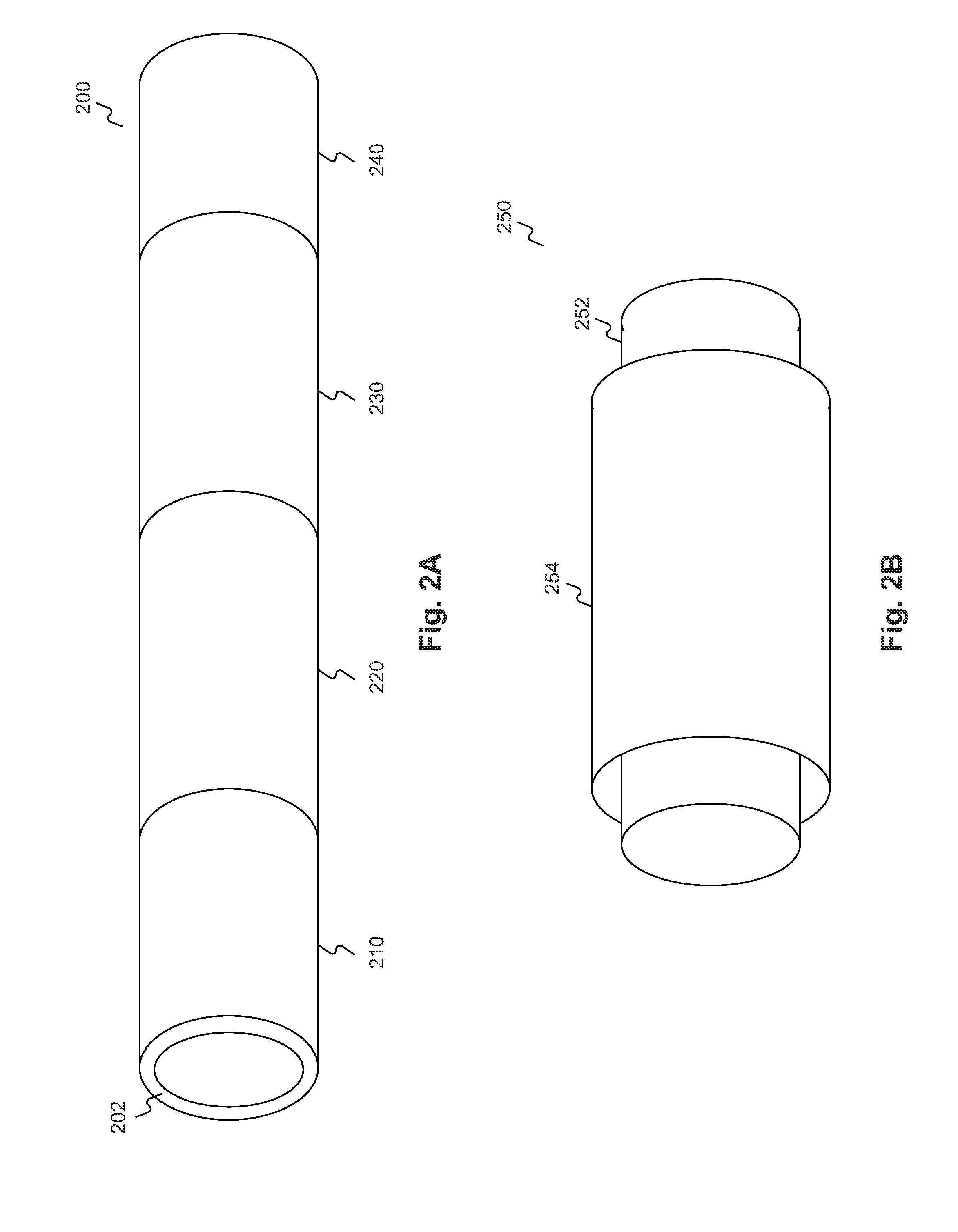Use of survival modeling methods with pipeline inspection data for determining causal factors for corrosion under insulation
a survival modeling and pipeline inspection technology, applied in the field of pipeline inspection, can solve the problems of slow contribution of pipeline joints to corrosion of the outer surfaces of pipeline joints, pipeline joints b, b> may be exposed to environmental moisture,
- Summary
- Abstract
- Description
- Claims
- Application Information
AI Technical Summary
Problems solved by technology
Method used
Image
Examples
Embodiment Construction
[0033]The following detailed description refers to the accompanying drawings. Wherever possible, the same reference numbers are used in the drawings and the following description to refer to the same or similar parts. While several exemplary embodiments and features of the present disclosure are described herein, modifications, adaptations, and other implementations are possible, without departing from the spirit and scope of the present disclosure. Accordingly, the following detailed description does not limit the present disclosure. Instead, the proper scope of the present disclosure is defined by the appended claims.
[0034]FIG. 4 is a diagram depicting exemplary hardware componentry of a computing system configured to perform the described embodiments, consistent with certain disclosed embodiments. System 400 can include one or more microprocessors 410 of varying core configurations and clock frequencies; one or more memory devices or computer-readable media 420 of varying physica...
PUM
 Login to View More
Login to View More Abstract
Description
Claims
Application Information
 Login to View More
Login to View More - R&D
- Intellectual Property
- Life Sciences
- Materials
- Tech Scout
- Unparalleled Data Quality
- Higher Quality Content
- 60% Fewer Hallucinations
Browse by: Latest US Patents, China's latest patents, Technical Efficacy Thesaurus, Application Domain, Technology Topic, Popular Technical Reports.
© 2025 PatSnap. All rights reserved.Legal|Privacy policy|Modern Slavery Act Transparency Statement|Sitemap|About US| Contact US: help@patsnap.com



